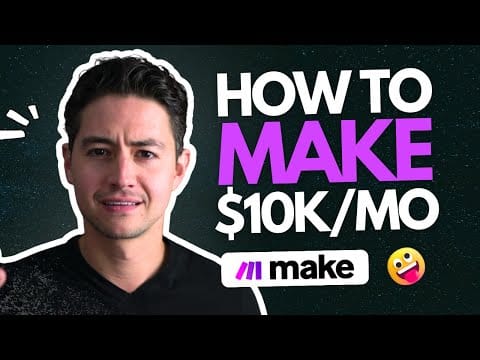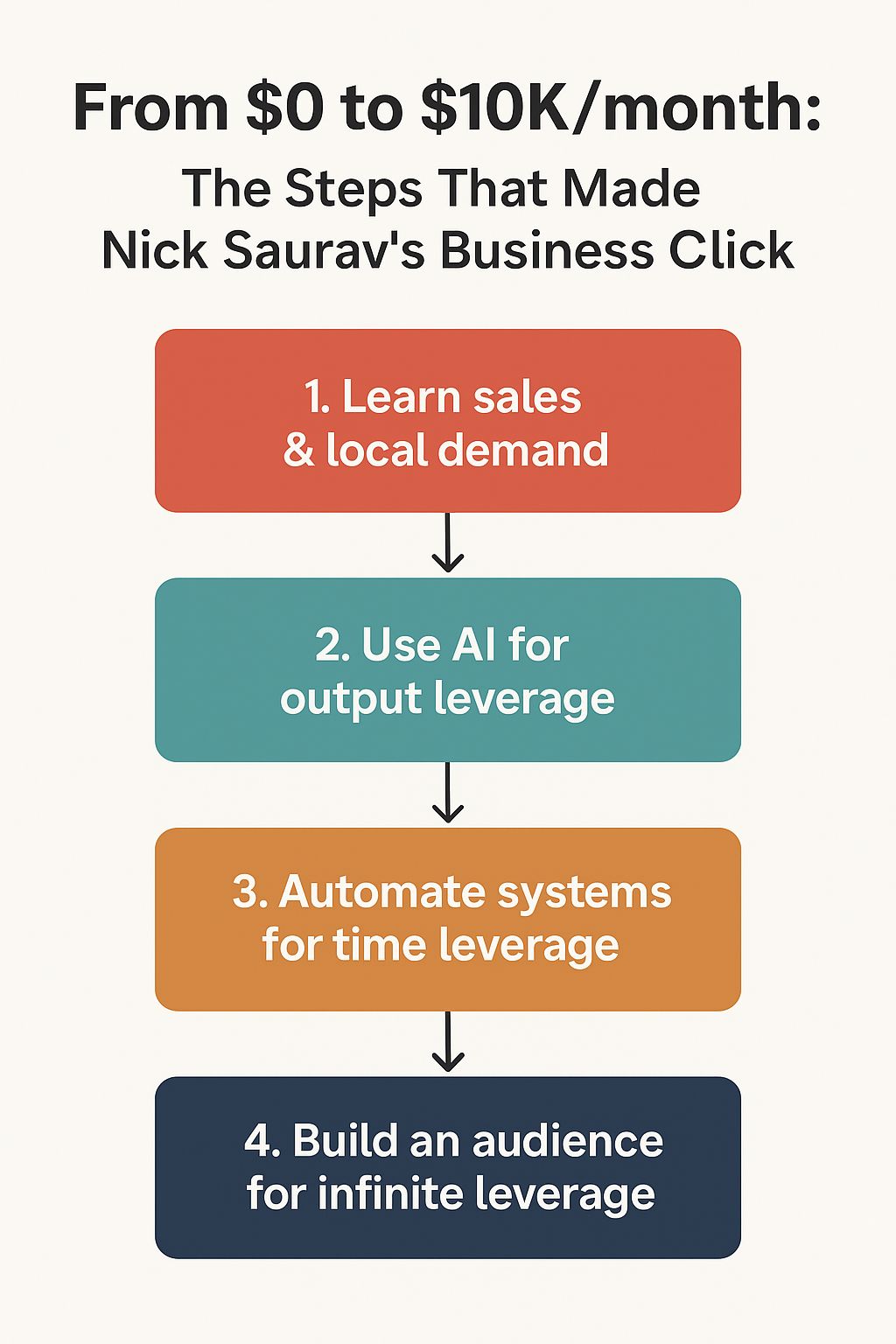- My first $10K+
- Posts
- How Nick Saraev made $1,000 in 30 minutes (and turned it into $72K/month)
How Nick Saraev made $1,000 in 30 minutes (and turned it into $72K/month)
From immigrant hustle to automation empire: Nick Saraev’s story
Who is Nick Saraev?
1. From immigrant family struggles → “I have to make my own path”
Nick’s story begins modestly. His family immigrated from Eastern Europe to Canada during the fall of communism. Money was tight; his parents worked 14-15 hours a day to pull the family forward.
In school, Nick devoured books and spent long hours in the library, but he didn’t feel satisfied by traditional academic routes. He began university thinking he’d go into psychology, surgery, or neuroscience, ambitions that looked great on paper, but didn’t light him up once he dug into the work.
Lesson: The gap between where you are and where you want to be becomes fuel. When you feel the pressure of “I need this to work,” you’ll be more willing to experiment, act fast, and lean into what works (not what you think should work).
2. His first real company: door-to-door & local services → First time hitting ~$20K in one month 💼
After university, Nick joined a friend who sold B2B software door-to-door. He tried his hand, and the next day he started his own local marketing business offering small companies services like “$200 to put you on the map!”
Within a year, he and his partner generated over $150K in revenue; he vividly remembers hitting ~$20,000 in one month for the first time.
Takeaways:
He sold something simple, understandable to small business owners.
He had immediate feedback: did the client like the map listing? Did it bring leads?
He felt the result of his work: he closed deals, he collected money, the business moved.
Lesson: Don’t start with grand visions of “global empire.” Begin with something local, concrete, high demand, and simple to explain; so you can feel what success feels like, and learn fast.
3. Pivoting into software/AI and recognising leverage → the $3K/month moment 💻
After some time, Nick realized his agency wasn’t scalable as it involved constant client chasing, revisions, and burnout.
He realized: “I’m trading time for money. I need leverage.”
He started reading Naval Ravikant, Dan Koe, and Justin Welsh.
It became obvious that location-dependent businesses (weddings, event videos) could vanish overnight (as they did in COVID), and he looked for something more scalable.
For some time, Nick tried a videography business and even a self-study into software.
He discovered that using the model GPT‑3 (ChatGPT) he could generate blog posts, content, etc. He started offering content writing services via freelance marketplaces at ~$0.02/word, then ~$0.05/word as quality improved.
He got to ~$3K/month in this model before thinking bigger.
Takeaways:
Recognise when your model is “time-for-money” vs. when you can build something with leverage (AI, template, automation).
A $3K/month business isn’t “small.” It’s a training ground. It gives you confidence, cash flow, and experience.
Then ask: “What if I duplicated this… scaled this… created a template?”
4. The revelation: “I made ~$1,000 in 30 minutes by duplicating a template” → scaling to ~$72K in one month 📅
Around the time AI tools started booming (2023), Nick saw indie founders building no-code apps and small SaaS tools that earned them recurring income. He didn’t have a technical background, but he started experimenting with Bubble, Make, and ChatGPT automations. Shortly after, he learned how to manage automation projects and founded his automation company, LeftClick.
His first success: automating lead capture from Twitter DMs → to Google Sheets → to Gmail follow-up.
He sold these “micro-automations” for $300–$500 each, getting him to another $3K/month, but this time with less effort and more scalability.
He realised: the formula isn’t custom work, but templates + systems. Instead of “we’ll build it from scratch for you”, he began selling “plug-in systems” like one-and-done cold-email automations, or one-click CRM workflows. Once he made that switch, he scaled to a month of ~$72K revenue!
Takeaways:
If you’re doing custom work now, you know how long it takes. You can imagine how exciting it is to find a faster way.
Strategy: A shift from “build once” to “sell many times”
Identify the repeatable part of your business that you can turn into a template. Ask: “What can I duplicate, rather than reinvent?” Then: “How many times can I sell that in a month to hit $10K (or more)?”

Source: Youtube
After scaling the automation model, Nick didn’t rely solely on outreach. He launched a YouTube channel, published blog posts, and built his personal brand. He was also building publicly on X and shared: screenshots, income reports, and workflow breakdowns.
He says around three months after launching his channel, he had ~10K subscribers and “the videos were doing the majority of my sales work.”
In one LinkedIn post he writes: “I made $72K in one month selling AI automation services. If I had to get my first customer from scratch in 2025, this is what I’d do…”
Takeaways:
Social proof accelerates trust. When others see you’ve done it, they feel safe buying.
Visibility turns cold leads into warm leads; fewer objections, better price.
It provides leverage: once your content works, you don’t have to work as hard for every sale.
Tip: Start one content channel (LinkedIn/YouTube/Twitter) and document your journey while you build. Share your wins, your stumbles. That authenticity builds engagement and leads.
6. Mindset & positioning: “AI systems can make you money” 📈
Nick reframes the pitch: Instead of “I build AI systems for you”, he positions it as “I help you make money by automating this task that’s costing you tens of thousands.” In a post he notes: “AI is B2C. ‘AI for money’ is B2B.”
He also emphasises value-based pricing: when you tie your fee to the outcome (how much money you save or make the client), you can charge multiples. For example: a cold-email system that books 20 sales calls for a client might be priced at $5K–$10K because the client’s upside is huge.
What this teaches:
Your service must be tied to real ROI.
Many entrepreneurs price based on “time” or “tasks.” Instead, price on “result”.
Once you’ve got one client outcome you can quantify, you can pitch others with that proof.

That’s a wrap!
Have any questions or feedback? Just reply to this email!
Until next time, keep building! 🚀